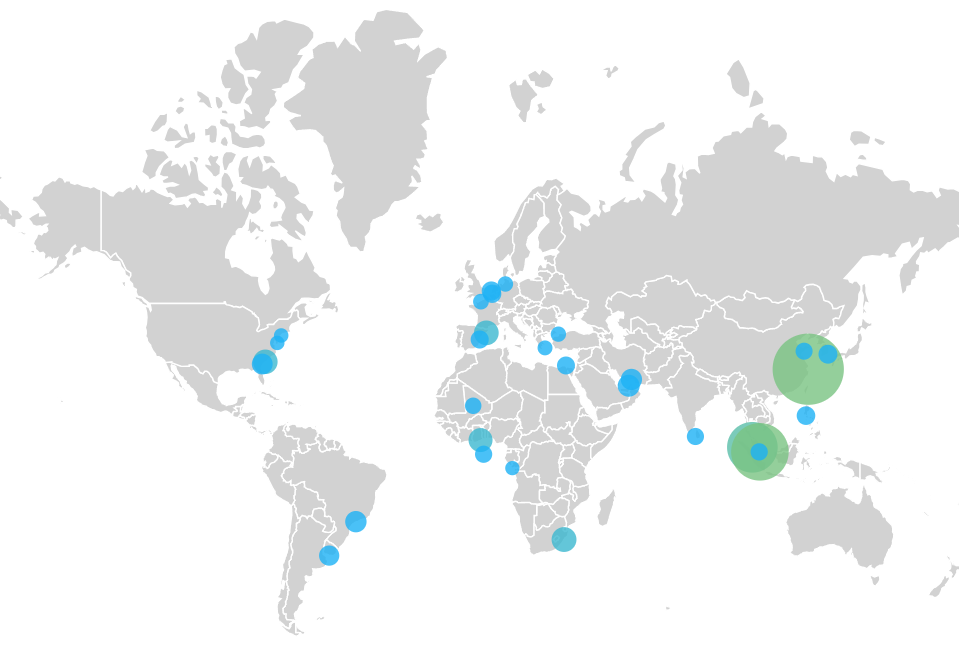Amazon Prime Day is set. On June 25, Amazon Global Store announced that the 10th Amazon Prime Day will be held worldwide from July 16 to 17. The announcement shows that this Prime Day will cover 23 countries including Australia, Austria, Belgium, Brazil, Canada, Egypt, France, and Germany. However, the event time of some sites is different, so please pay attention to official updates.

However, at this critical moment of preparation for the peak season, many sellers encountered complex challenges.
Amazon Prime Day is basically one of the hot-selling nodes for cross-border sellers. Every year, there are also some problems that give sellers headaches, which can be dealt with proactively. However, the road to cross-border expansion seems to have been put under a "tightening curse", which also worries sellers?
01 What will we encounter when preparing for Prime Day this year?
Many of Amazon's warehouses are severely overwhelmed
First, let's take a look at the recent situation of Amazon warehouses. Amazon warehouses in Germany, the United Kingdom, the United States and other places have experienced warehouse explosions, and the problem of delayed product listing may need to be solved in a timely manner. Amazon Germany's XDEV, XDEA, DTM1, LEJ3, DTM2, STR1 and other warehouses are in a state of explosion, and some are difficult to arrange warehouses; and the UK's LBA4, BHX4, XBH5 and other warehouses are also experiencing warehouse explosions.
In addition, Amazon's more "popular" warehouses in the West Coast of the United States have actually already exploded. It is understood that since May, many warehouses in the West Coast of the United States have had serious warehouse explosions, refusal to accept packages, and temporary closures of warehouses. Although warehouses in other regions are "calm", they still need to pay attention to new changes. If these problems spread, it will not only affect the seller's stocking progress, but may also lead to delays in product listing or the risk of out-of-stock during the peak season.
This year's supply chain crisis is quite fierce
» Potential threat of strike. In June, strikes occurred continuously at several key ports and terminals in Europe. From June 17 to 18, the five largest ports in Germany, Hamburg, Bremen, Bremerhaven, Breck and Emden, were launched by the German Verdi trade union. At the same time, strikes at ports in France are also in full swing.
Several strikes broke out in the country in June. If the union negotiations are not settled, there may also be strikes from July to September. Workers at Amazon's Coventry warehouse in the UK have also stated that they will vote from July 8 to 15 to decide whether to form a union, which may be one of the future "duels".
In addition, the situation in the United States is not peaceful either. Truck drivers protested outside Amazon's BDL4 distribution center in Windsor, and Amazon warehouse workers at JFK8 Airport in Staten Island, New York, discussed the establishment of a union. This series of events is putting pressure on logistics and transportation.
» Port congestion is increasing. The threat of attacks in the Red Sea has not eased, and as a result, ships have chosen to bypass the Cape of Good Hope in Africa. Longer routes and ship berthing and transshipment have also affected ports such as Singapore. According to Linerlytica data, global port congestion has reached its highest level in 18 months this month, with 60% of ships waiting to berth located in major Asian ports.
The problem of port congestion in Asia still exists. According to foreign media reports, although the situation in ports such as Singapore and Malaysia has eased, the industry predicts that this relief may be due to the emergence of new transshipment alternatives, but it may also lead to congestion in new transshipment ports in turn.

Source: Port congestion as of June 25/Linerlytica
» The peak season has come earlier and shipping companies have collectively raised prices. This year's peak shipping season arrived earlier than expected, exacerbating port congestion and putting heavy cost pressure on sellers. According to Freightos data, freight rates from Asia to North Europe have risen to about $7,000/FEU, 40-50% higher than the highs in January and February 2024.

Prices from Asia to Europe
In addition, it is reported that freight rates on the East Coast of the United States are currently over US$8,000/FEU, 20% higher than in February; demand on trans-Pacific routes is expected to peak in August, and freight rates may continue to rise. With the announcement of surcharges and general freight increases on European and North American routes by major shipping companies in July, freight rates on some routes are expected to rise to about US$10,000/FEU.
The supply is even tighter due to the early arrival of the peak shipping season, the compression of shipping capacity caused by the Red Sea detour, and the subsequent port congestion. In addition, European and US customs have recently increased their inspections on imported e-commerce products, which will further aggravate the transportation "congestion" crisis, and sellers' logistics planning is also facing greater uncertainty.
How to deal with the increasing threat of going out to sea?
Amazon Prime Day has entered the stocking stage. Faced with this logistics "congestion" crisis, how should cross-border sellers deal with it? In fact, there are similar challenges every year. The key lies in how to respond proactively.
- Option to disperse inventory. When facing an Amazon warehouse overflow, you can consider dispersing shipments to different warehouses to reduce the risk of a single warehouse overflow.
- It is also essential to keep an eye on market changes and logistics dynamics. The peak season has arrived, and cross-border sellers need to pay close attention to adjustments in platform policies and market trends, plan logistics and warehousing in advance, and be fully prepared for the upcoming Prime Day and the second half of the year's peak sales season.
- Multi-channel logistics can be planned. During the stocking period, in addition to "relying" on Amazon FBA services, you can also choose reliable third-party logistics and overseas warehouse service providers to ensure smooth transportation of goods during the peak season.
Some high-quality logistics service providers have reliable first-leg logistics and one-stop overseas warehouse services, which can help sellers manage inventory more flexibly and optimize product listing time. As one of the first SPN logistics service providers of Amazon, Baosen Suntop has been focusing on the field of logistics compliance for 21 years.
At the same time, Baosen Suntop is also an AEO enterprise certified by the European Union. Baosen Holland Warehouse is a customs-supervised warehouse that specializes in providing compliant, safe and efficient end-to-end logistics complete closed-loop services. In the complex and changeable situation during the peak season, it can assist sellers in solving pain points such as first-leg logistics and tail-end warehousing and distribution in one stop.




